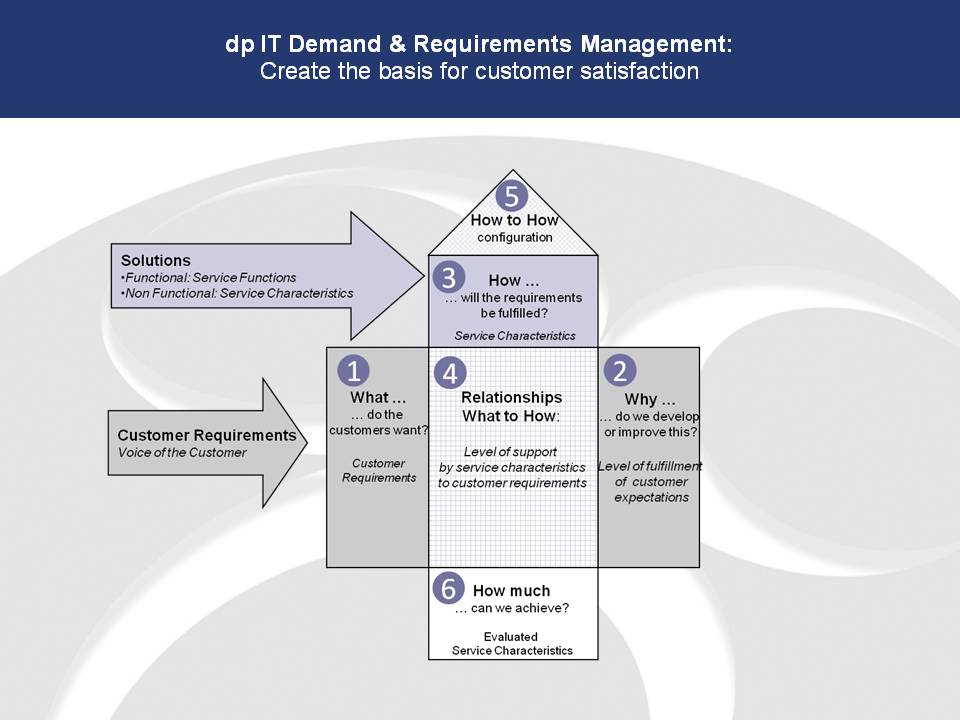IT Demand & Requirements Management: Setting the basis for customer satisfaction
Today nothing goes in business without electronic provision of needed information. The availability of qualitatively and timely appropriate information enables business success and is furthermore critical to everyones’ personal performance within daily work. This fact is essential to the emotional perception of IT services. Who of us wasn’t restricted in his private life due to a lack of availability of supporting IT infrastructure and services?
It is the personal concernment of each internal IT customer that demonstrates the dimensions in customer satisfaction within IT services. They have to comply to economical considerations as well as emotional perceptions.
Due to this span of consequences of IT services onto companywide and individual success, a differentiated view on managing customer expectations will be necessary. Basically customer satisfaction is driven by a customers’ experience and perceived quality of the delivered IT services.
The first prerequisite for high customer satisfaction is understanding and pinpointing the customer’s expectation regarding the total lifecycle in order to later deliver against it. During the lifetime of an IT service, several groups of customers with different expectations need to be satisfied.
Top Management has interest in the value proposition of IT services and solutions for the business system and expects transparency of cost and benefit along the complete IT service lifecycle.
Operations management has interest in the right implementation of business requirements within IT services and expects measurable quality and cost along the complete lifecycle.
The users’ interest lies in the IT services’ support for his daily work, its functionality, performance and operational availability.
In order to professionalize IM Demand & Requirement Management as well as IM Service Management, Dewey & Partner have developed a methodology based on the principles of Quality Function Deployment’.
The advantage of this methodology lies in the coherent specification of the business applications by means of solutions and processes to the point of services with respect to the different stakeholder groups. At the same time it avoids complexity by prioritizing step by step within a ‘just enough’ philosophy: The customer reliably gets what he economically needs.

